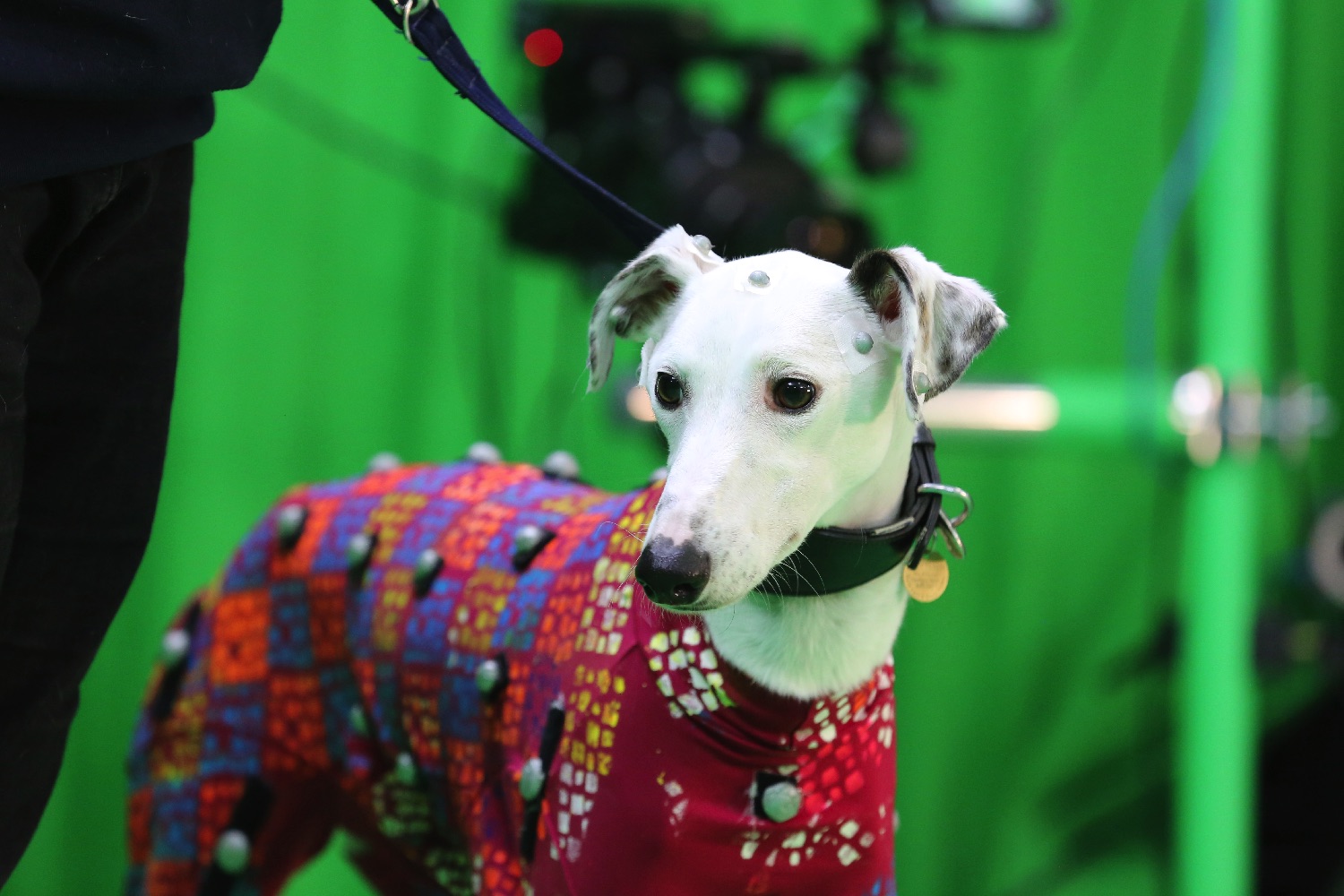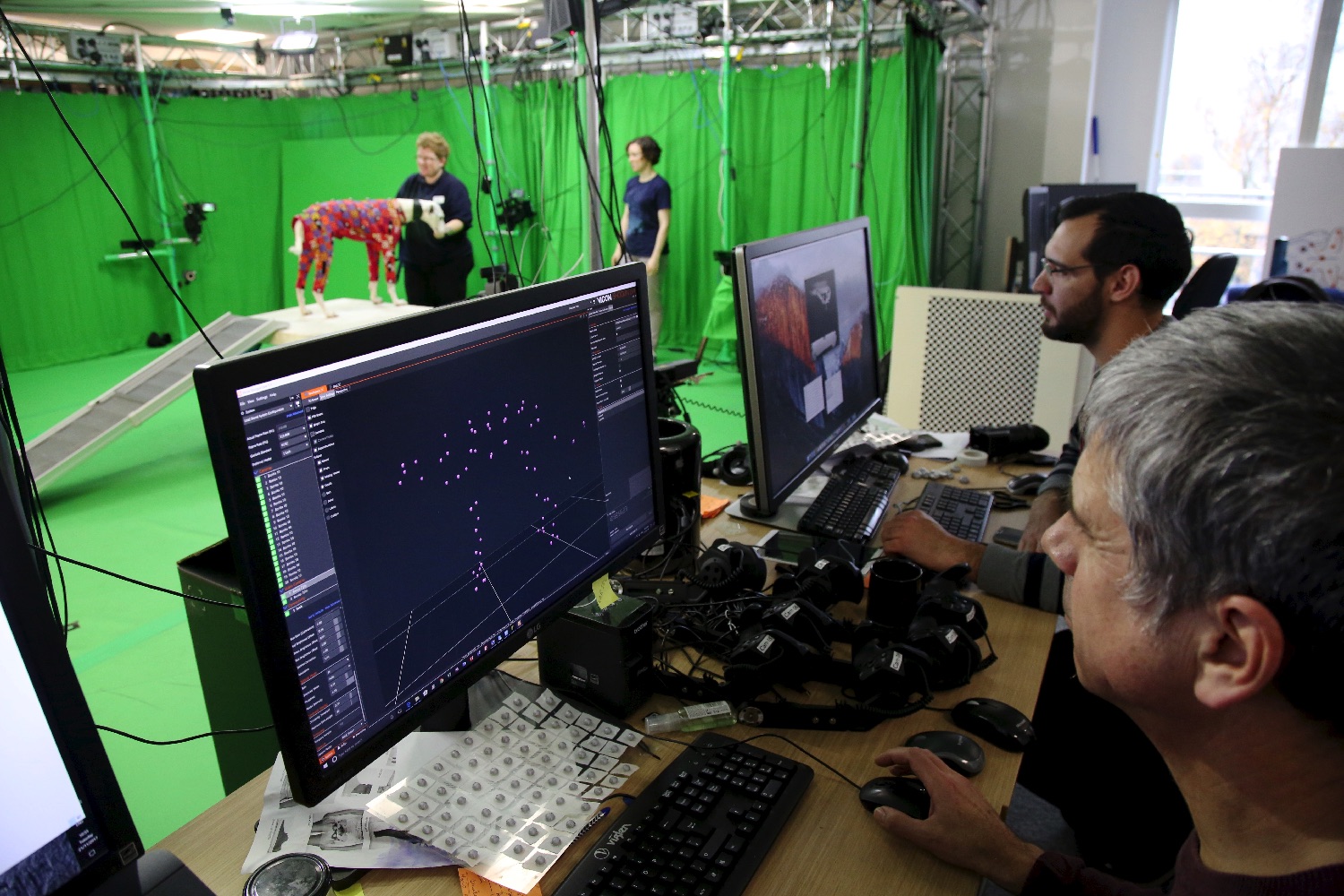Constantly improving motion-capture technology and computer graphics makes it easier than ever to digitize humans and transport impressively lifelike avatars into the virtual world. But what kind of virtual dystopia would it be if folks weren’t able to take their beloved canines into the digital realm with them? To right that wrong, researchers from the motion capture research center at the U.K.’s University of Bath have built the first motion capture suit made especially for dogs. Because why should people get all the mo-cap fun?
“Currently the most accurate way to record the motion of a subject is to place reflective or LED markers on the subject and use software to track the movement of the markers over a recorded sequence,” Sinéad Kearney, a researcher in the University of Bath’s Department of Computer Science, told Digital Trends. “To help the markers stay in place, the subject usually wears a skin-tight suit and we attach the markers to the suit. These suits are readily available for humans, but not for animals, so we had to make our own suits for the dogs.”
The researchers purchased commercially available dog clothing, designed to help protect them from ticks, burrs, and other things that attach to their fur. They then painted the fabric with custom patterns and attached mo-cap markers for measurements.
“None of the dogs seemed to find the suits uncomfortable,” Kearney said. “We let their handlers put the suit on the dog, so that [it] wouldn’t be in close contact with strangers in case it spooked them. They were also given lots of treats throughout the process, and we made sure to keep the studio nice and cool.”
Motion capture suits for mutts
While this may sound very similar to the motion capture tech that’s used to record the movement of actors for Hollywood movies or motion-scan characters for video games (except, you know, for dogs), there are some notable differences. For one thing, conventional motion capture setups often require multiple cameras. In this case, only one camera was needed to accurately record the movement of the dogs kitted out in their suits. Even more impressively, once the computer model has been trained to recognize the movement of the suit-wearing canines, it was then able to accurately predict and replicate the poses of dogs filmed without it.
“This is a really difficult task,” Kearney explained. “To help constrain the problem, we first need a reference data set of dog motion. This type of data set didn’t exist, so we had to create one ourselves. We did this by recording the dogs while they’re wearing suits, giving us the level of accuracy that we needed. We can then train our system to recognize what real dog motion looks like. From then on, we don’t need to have the dog wearing a suit in order to predict the pose.”
Alongside “digitizing dogs” for entertainment purposes, Kearney said that this work could also prove useful for veterinarians carrying out tasks such as assessing issues with a dog’s gait. In the future, the researchers plan to expand the number of animals this technology can be used for — creating similar suits for cats and even horses to find out what kind of results can be gathered.
A paper describing the work, titled “RGBD-Dog: Predicting Canine Pose from RGBD Sensors,” is available to read online.
Editors' Recommendations
- Ring’s new Pet Profile feature can help find your lost dog
- Marker-free motion capture tech will help athletes train for future Olympics
- Cull faster and recover highlights with new tools inside Capture One 20





